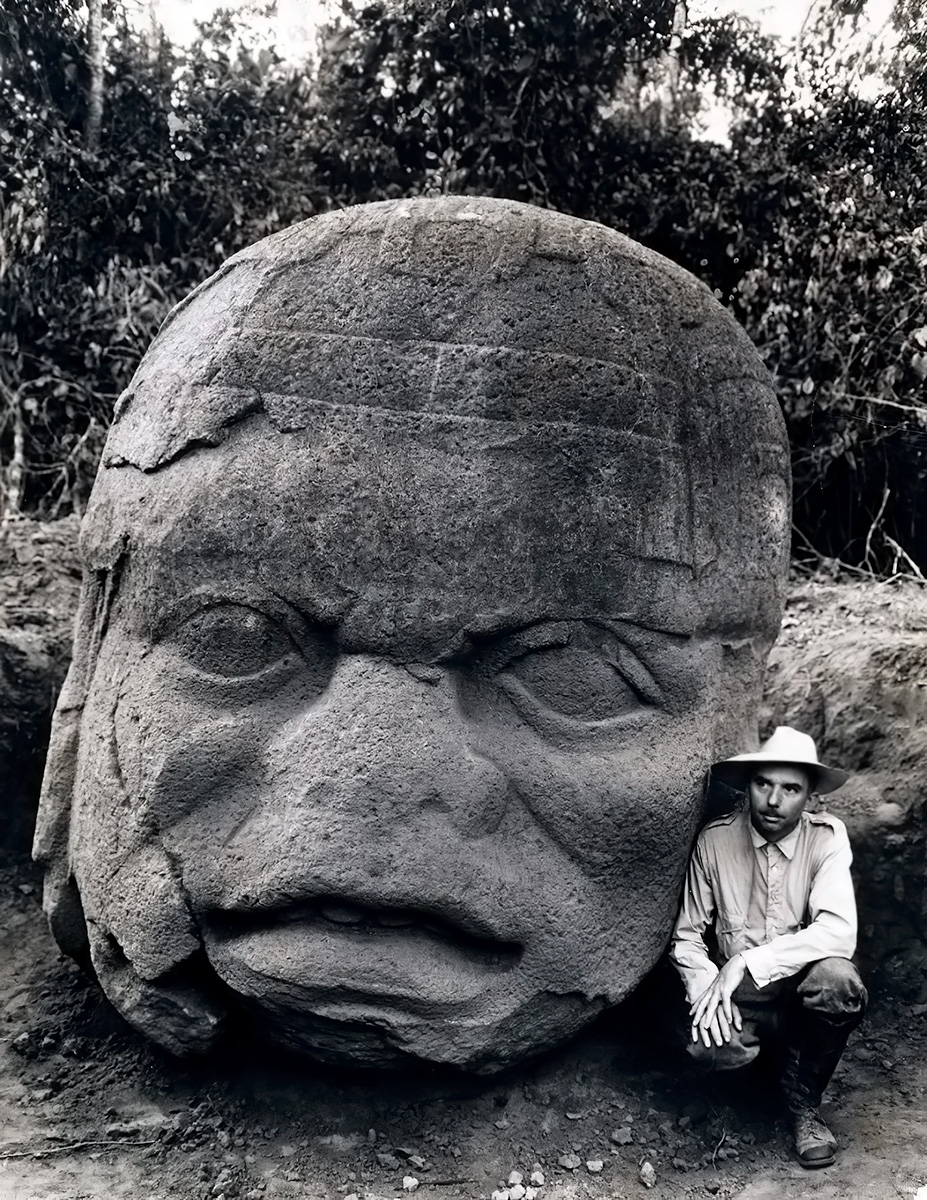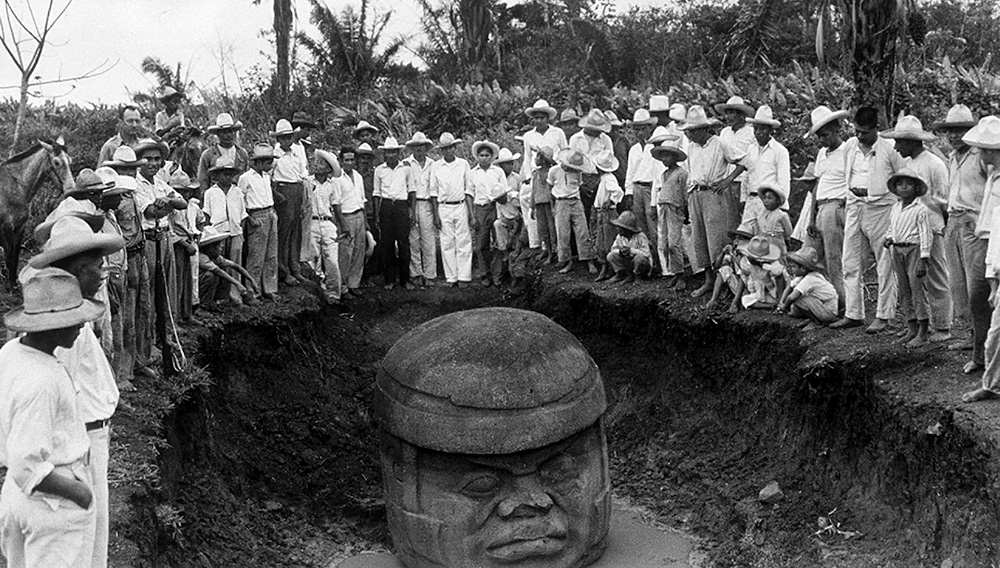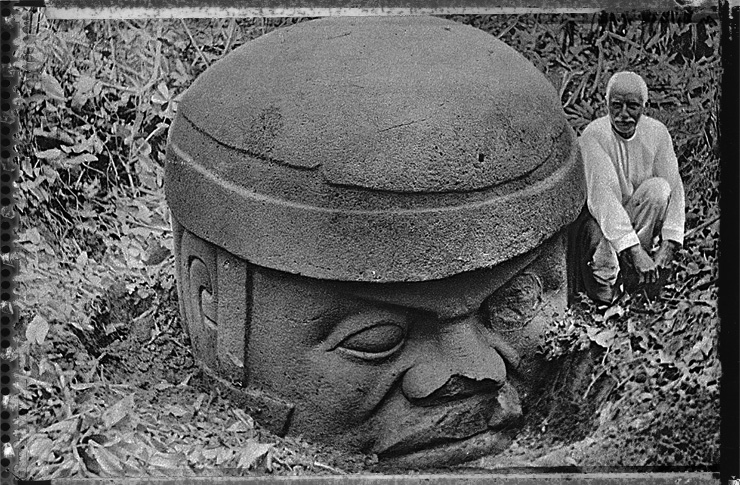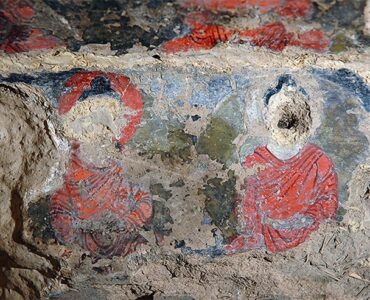The revelations made by Master Samael Aun Weor regarding the Olmec Colossal Heads are astonishing. These are details that could only come from a direct witness of that distant time. A witness who remembers…
Archaeologists still have not been able to explain how such massive blocks of rock could have been transported to the places where they are found, since they are made of magnetic volcanic stone. According to the Master, these giant stone heads were instead made from a mixture, somewhat like cement or concrete. They were therefore not transported, but made on site. Moreover, he explains why the facial features do not correspond to those of the Olmecs. But first, let’s briefly see what Wikipedia says…



PHOTOGRAPH BY RICHARD HEWITT STEWART, NATIONAL GEOGRAPHIC
The Olmecs are an ancient pre-Columbian people of Mesoamerica who flourished from 2500 B.C. to 500 B.C. along the Gulf Coast of Mexico, in the Mexico Basin, and along the Pacific Coast (in the states of Guerrero, Oaxaca, and Chiapas). They are the oldest known civilization of Mesoamerica, and are often considered its “mother culture” because the first Olmec city, San Lorenzo, is the oldest known Mesoamerican city and because later cultures share many common features that seem inherited from the Olmecs. The term “Olmec,” from the Nahuatl word olmeca, meaning “the people of the rubber country,” is linked to the discovery of the first Olmec colossal head in 1862, and was made official in 1942 by Olmecologists.
— Wikipedia
The Olmec colossal heads are monolithic sculptures representing large human heads in the round. Carved from basalt boulders, they date back to at least 900 B.C. and are representative of the Olmec civilization in Mesoamerica. Of the 17 known colossal heads, all represent middle-aged men with fleshy cheeks, flat noses, and slight strabismus; their physical features correspond to a type that is still common among the inhabitants of the states of Tabasco and Veracruz in Mexico. The rocks come from the Sierra de los Tuxtlas mountains in Veracruz; since the stones used to make the statues were transported over great distances, requiring many resources and human effort, it is believed that these monuments are portraits of powerful Olmec rulers. The method and logistics of their transport to these sites remain unclear.
— Wikipedia

Excerpts from a conference by Master Samael Aun Weor
“In reality, I’ve read almost nothing, yes nothing, I’ve read almost nothing about Anthropology. However, everything that exists here among the Nahuatl and among the Mayans, I know perfectly well, yes, all of it. It happens that I had already known it, and that I gave many indications about all of it. Why? Because in ancient times, I was in contact with that great culture, with those Mayan and Nahuatl cultures. It was my responsibility to lead caravans coming from Atlantis.
“And of course caravans would come. We stayed in caravanserais, kinds of restaurants or cafés — one might even say restaurants or inns; that’s where we stayed. I always met these black-skinned people who arrived when they came from Africa via Atlantis. I knew all of that. And it also happened to me several times to guide pilgrims to Teotihuacan and to Yucatán, and all that. Thanks to that, I know all the Wisdom of the ancient Nahuas, Mayans, Toltecs, Zapotecs, etc. A [sculpture in the] shape of a head is quite abundant in those parts, of a person with black features. A person I knew… It’s a remnant of the African Initiates who came here…
“There were also black African Initiates. Still today, as a memory of that, you can see a kind of huge head, with protruding cheekbones, an African mouth, an African nose… Anthropologists give them a name, they say they are Olmecs. Well, I’ve heard what they say, but I say what I know. What they say is one thing, what I know is another…
“If you observe these stone heads, enormous, very large, with African features, of course they are African! They were made in remembrance of those African Initiates who came then from Africa, crossing through Atlantis.
“Africa wasn’t called Africa at that time; it was then a small continent: the continent of Grabontzi. And that continent wasn’t very big; the continent of Grabontzi was small… But later, after the submersion of Atlantis, new lands emerged from the bottom of the seas and were added to that continent, and it grew, it became large. But in those times I’m talking about, the continent of Grabontzi was very small.
“But the African Initiates came from Africa, through Atlantis, and arrived at the north of the Gulf of Mexico, and entered all over the country. And, as a result of this, the descendants erected monuments and later carved heads, as a testimony to those African people. But really, observe that they do not match any of the pre-Cortesian races established here in the country; it’s a completely Negroid type. Negroid! Where does it come from? It’s a memory of that time!
“With the sinking of Atlantis, that land disappeared — the one that linked Africa with the north of the Gulf of Mexico. That was the end; the ocean swallowed up that strip of land and there were colossal changes. For example, I used to enjoy living in a very peaceful valley that existed where the Gulf of Mexico is now. With the Great Catastrophe, that valley was then flooded by the waters and now it is the Gulf of Mexico.
“There were terrible changes in the geology. That place was full of many kingdoms. I liked to live from kingdom to kingdom… It was full of kingdoms… I visited all those kingdoms, and those kingdoms weren’t called “Mexico,” they had different names, depending on the kings, depending on their traditions. Of course, later it became Mexico, with the Mexicas, who took the name from ancient Mexico, but at the time I’m talking about, there were many kingdoms, many… I knew them…
“And all that knowledge and everything contained in those stones, all this matter, is esoteric transcendent knowledge. It is my role, or it will be my role, to reveal it to you, and it is my duty to reveal it to you. I was a witness to the rituals that were performed, both in Yucatán and in ancient Tenochtitlan and the nearby places.
“But observe something very curious: this kind of Negroid head, which I mentioned, doesn’t really fit into any of the cultures that exist here. It’s something distinct, something strange, something different, something that has nothing to do with these current cultures. Nothing matches!
“But, what’s curious, is that these kinds of very large stones weren’t transported as many believe. No, stones were kneaded back then, rocks were kneaded using a certain formula that is now lost.”




















Ajouter un commentaire